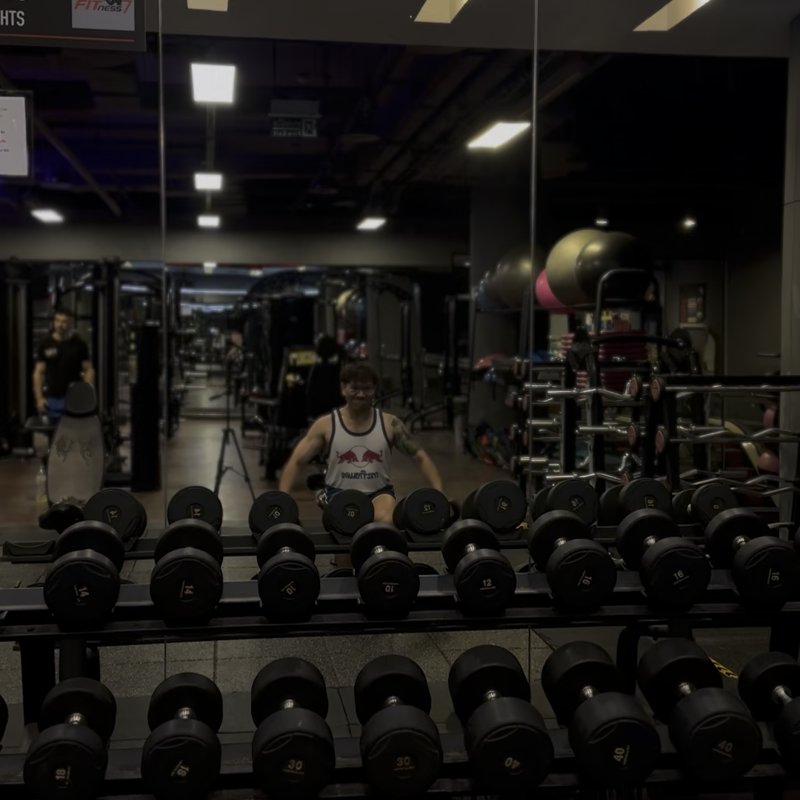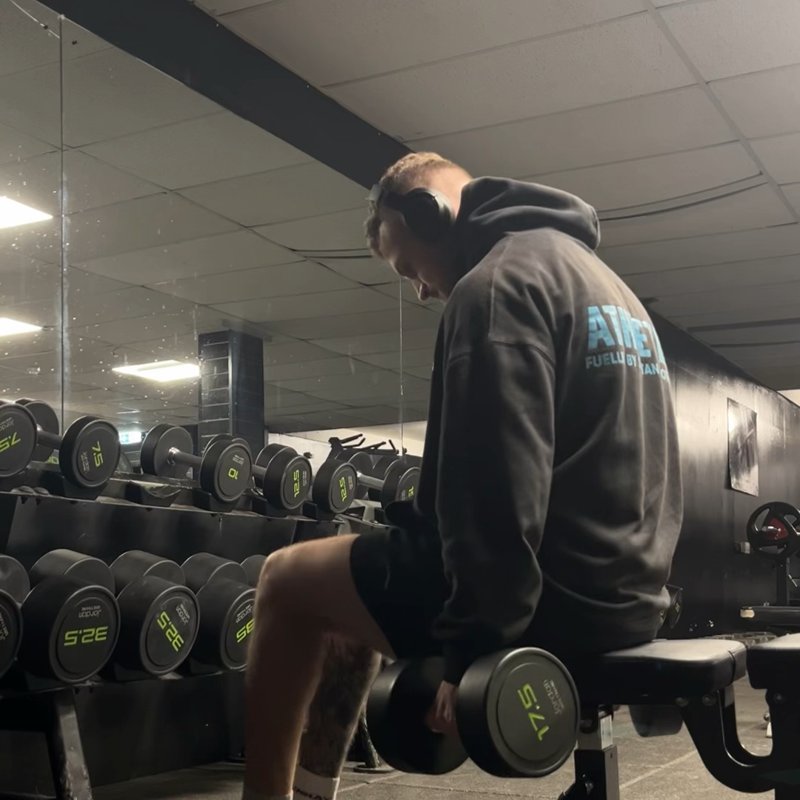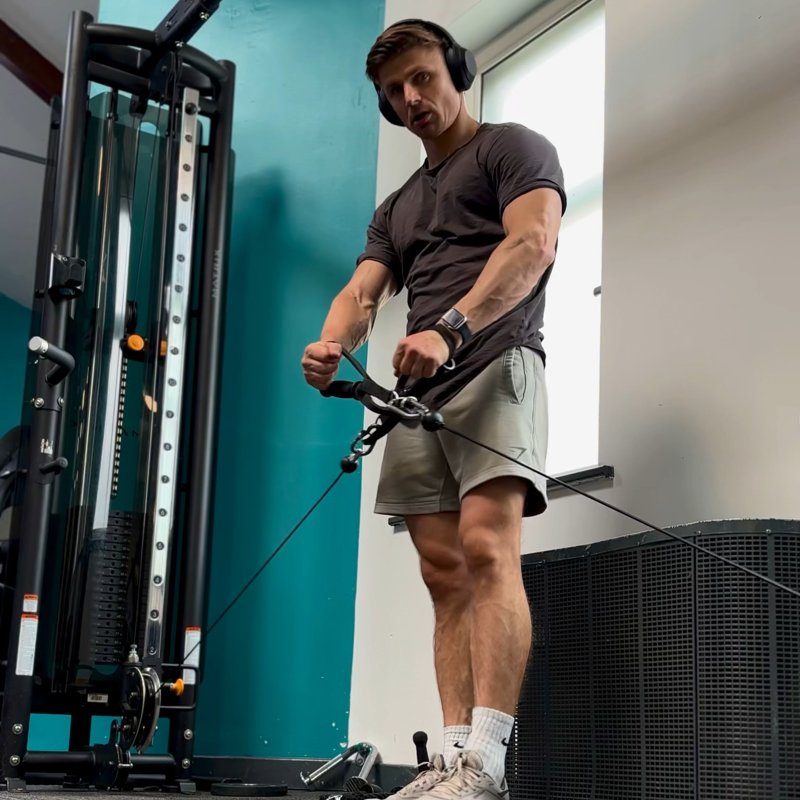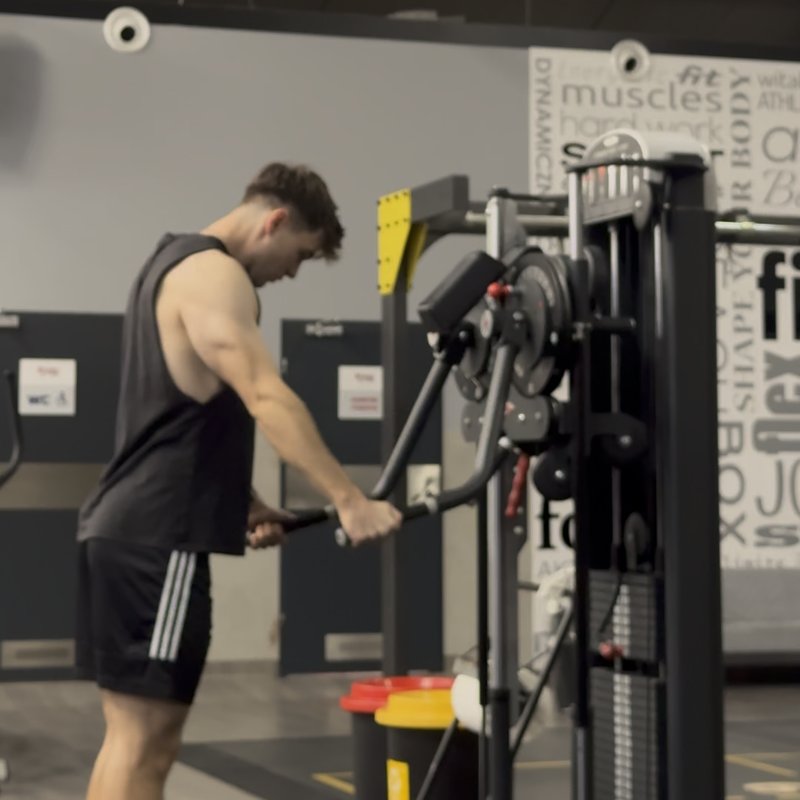Dumbbell Lateral Raise: The Ultimate Guide
The dumbbell lateral raise is a targeted isolation exercise that specifically targets the lateral deltoids to build shoulder width and definition. This guide covers proper technique, variations, and programming for optimal shoulder development.

Quick Facts
Key Benefit
Develops wider, more defined shoulders by isolating the lateral deltoid heads
Primary Muscles
Medial Deltoids
Secondary Muscles
Anterior Deltoids, Pectoralis Minor, Posterior Deltoids, Traps
Equipment
Dumbbells
Difficulty
Beginner
Type
Isolation, Hypertrophy
In This Guide
Ready to master the Dumbbell Lateral Raise?
Track your progress, see improvements over time, and build strength consistently.
Download GravitusThe Dumbbell Lateral Raise is one of the most effective exercises for developing defined, broader shoulders. While compound pressing movements like overhead press are excellent for building overall shoulder strength, the lateral raise specifically targets the lateral (side) deltoid heads that create that impressive shoulder width and capped look. This isolation exercise is accessible to all fitness levels and requires minimal equipment, making it a versatile addition to any training program. Whether you're training for aesthetics, functional strength, or athletic performance, well-developed lateral deltoids contribute to a balanced physique and healthy shoulder function. In this comprehensive guide, we'll cover proper lateral raise technique, common mistakes to avoid, effective variations, and programming strategies to help you maximize your shoulder development.
Why the Dumbbell Lateral Raise Is Worth Mastering
The dumbbell lateral raise offers several unique benefits that make it an essential exercise in any shoulder training program:
Targeted Shoulder Width
Specifically isolates the lateral deltoid heads which are responsible for creating shoulder width and the coveted "3D" shoulder appearance.
Balanced Development
Complements pressing movements by focusing on the lateral deltoids, which often lag behind the anterior (front) deltoids in development.
Joint-Friendly Isolation
When performed correctly, allows you to train the shoulders with reduced risk compared to heavy pressing movements, making it ideal for those with shoulder issues.
Proper Dumbbell Lateral Raise Form: Step-by-Step
Starting Position
- Select an appropriate weight (this exercise requires lighter dumbbells than you might expect).
- Stand with feet shoulder-width apart, knees slightly bent, and core engaged.
- Hold dumbbells at your sides with a neutral grip (palms facing your body) and a slight bend in your elbows.
- Pull your shoulders back and down, maintaining good posture with chest up.
The Movement
- Keeping your torso upright and core braced, raise the dumbbells out to the sides with elbows slightly bent.
- Lead with your elbows rather than your hands, focusing on using your lateral deltoids to drive the movement.
- Continue raising until your arms are approximately parallel to the floor (elbows at shoulder height).
- Briefly pause at the top position to maximize tension on the deltoids.
- Slowly lower the dumbbells back to the starting position with control, maintaining tension throughout.
Key Form Tips
Elbow Position
Maintain a slight bend in the elbows throughout the movement (about 10-15 degrees) to reduce stress on the elbow joint.
Range of Motion
Raise until arms are parallel to the floor; going higher shifts emphasis away from the lateral deltoids.
Grip Orientation
At the top of the movement, tilt your pinky slightly higher than your thumb (slight internal rotation) to better target the lateral deltoid.
Tempo
Use a controlled tempo with special emphasis on the lowering phase (3-4 seconds down).
Shoulders Position
Keep shoulders down away from your ears throughout the movement.
Isolate the Movement
Avoid using momentum, swinging, or leaning to lift the weight.
Muscles Worked in the Dumbbell Lateral Raise
Primary Muscles
- medial deltoids: The side portion of the shoulder muscle that creates width and the rounded cap appearance is the primary target of this exercise.
Secondary Muscles
- anterior deltoids: The front portion of the shoulder assists, especially if the dumbbells are raised slightly forward of the body.
- posterior deltoids: The rear portion of the shoulder contributes minimally, particularly when maintaining proper form with a slight internal rotation at the top.
- supraspinatus: One of the rotator cuff muscles that helps initiate the first 15-30 degrees of abduction in the shoulder joint.
- traps: Assists with scapular stabilization during the movement, especially if you maintain proper form and posture.
- pectoralis minor: Acts as a stabilizer for the shoulder blade during the movement.
Common Mistakes and How to Avoid Them
Using momentum to swing the weights up
This reduces tension on the target muscles and often involves excessive traps. Use lighter weights that allow controlled movement, keeping your torso still and focusing on raising the dumbbells using only your deltoids.
Raising arms too high (above parallel)
Raising beyond parallel shifts the work from the lateral deltoids to the upper traps and can contribute to impingement. Stop the upward movement when your arms are parallel to the floor, with elbows at shoulder height.
Shrugging the shoulders during the lift
This activates the trapezius rather than isolating the lateral deltoids. Keep your shoulders down and back throughout the movement, creating distance between your ears and shoulders.
Using too heavy weights
The lateral deltoids are relatively small muscles not designed for moving heavy loads. Prioritize proper form with lighter weights (most people use dumbbells that are too heavy for this exercise).
Dumbbell Lateral Raise Variations
Body Position Variations
-
Seated Lateral Raise
Performing the movement while seated removes the potential to use lower body momentum, ensuring strict form and increased isolation of the lateral deltoids.
-
Leaning Lateral Raise
Leaning away from the working arm (against a support) increases the range of motion and creates constant tension throughout the movement.
-
Bent Over Lateral Raise
Bending forward at the hips shifts emphasis to the posterior deltoids while still engaging the lateral head.
Execution Variations
-
Cable Lateral Raise
Using a cable machine provides consistent tension throughout the entire range of motion, particularly at the bottom position where dumbbells provide minimal resistance.
-

Partial Rep Lateral Raise
Performing only the top half of the movement keeps constant tension on the lateral deltoids and can be effective for breaking through plateaus.
-

21s Lateral Raise
Perform 7 partial reps in the bottom half, 7 partial reps in the top half, then 7 full-range reps for intensive metabolic stress and time under tension.
FAQs About the Dumbbell Lateral Raise
No, keeping your arms completely straight places excessive stress on the elbow joints and can lead to injury. Maintain a slight bend in your elbows (approximately 10-15 degrees) throughout the entire movement. This "soft lockout" position protects your joints while still fully engaging the lateral deltoids.
Most people use weights that are too heavy for proper lateral raise form. As an isolation exercise for a relatively small muscle group, lateral raises typically require lighter weights than you might expect—often 5-15 pounds for beginners and 15-25 pounds for advanced lifters. Choose a weight that allows you to perform 10-15 controlled repetitions without breaking form or using momentum.
For optimal performance, it's generally best to perform compound pressing movements (like overhead press or bench press) before isolation exercises like lateral raises. This allows you to use maximum energy for the heavier compound lifts. However, if lateral deltoid development is a priority focus for you, occasionally performing lateral raises first in your workout can help emphasize this area.
Video Demonstrations

Log in to watch video demonstrations
Login to Watch3 video demonstrations available
Find more video demonstrations in the Gravitus app
Tips from the Community
-

Keep a looser grip on the Dumbbells and maintain tension on the medial head by keeping the elbows slightly higher than the wrists
-

There’s some controversy over whether rotating your wrists forward during this movement can cause shoulder impingement…
-

Agree with he looser grip. In ADDition lead with your elbow towards the sky and pinky too. So it’s not a perfectly parallel upward motion.
-

I like to do them with my elbow slightly behind my body so that hand is in clone with lateral delt. I feel it way better
-

chest up lean forwards
Track your progress with Gravitus
Download Gravitus to log your workouts, track your progress, and join a community of fitness enthusiasts.

Helpful Resources
One Rep Max Calculator
Find your one rep max for any exercise without maximal testing. Essential for developing effective strength training programs.
Calculate 1RMWorkout Programs
Follow structured workout programs created by fitness professionals to maximize your strength and muscle gains.
View Programs




